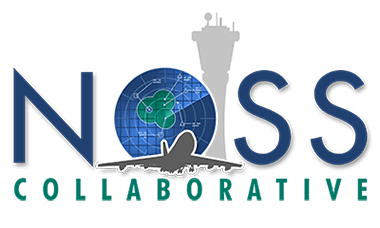Threat and Error Management
Threat and Error Management (TEM)
TEM is a conceptual framework that aides, from an operational perspective, in understanding the interrelationship between safety, human performance and the dynamic and challenging contexts in which ATM duties are performed. The TEM framework is sensitive to the interplay between the operational environment and human performance, and the resultant impact on human performance.


Threats
Threats are external events beyond the influence of controllers, but which require their attention and management to maintain safety margins. Threats are everywhere (traffic, adverse weather, airport/airspace infrastructure, equipment, pilots, other controllers, etc.) and controllers must devote attention to managing them. The more complex, challenging, and/or distracting the environment is, the greater the controller’s workload.
Errors
Errors are defined as actions or inactions that deviate from organizational or operational expectations or intentions. This may include slips, lapses, violations, shortcuts, workarounds, etc., – they all provide information and feedback about system performance. Errors can vary from minor deviations to something more severe. Some patterns of errors may have negligible effect on safety and may indicate safe, effective shortcuts or workarounds. While other errors may be graver. This is why the foundation of TEM lies in understanding error detection, error management and the impact errors have on the operation rather than solely focusing on error commission.


Undesired States
Undesired States may occur as a result of threats or errors that are not properly managed. Undesired Sates are more difficult to define but involve a clear reduction in safety margins and may be thought of as transitional states from normal operations to incidents.
TEM Applications
Controller errors are defined as observed deviations from organizational expectations or controller intentions. This definition of errors is expansive and is interested in slips, lapses, violations, workarounds, mistakes, shortcuts, etc. – they all provide information and feedback about system performance. Errors can vary from minor deviations, such as not using a checklist, to something more severe, such as not coordinating an altitude change with other controllers. Regardless of cause or severity, the outcome of an error depends on whether the error is detected and managed before it leads to a consequential outcome. This is why the foundation of TEM lies in understanding error management rather than solely focusing on error commission.
- Common framework / language – TEM has inherent meaning to, and is quickly grasped by, front line personnel. It aides in sensemaking and communicating about safety amongst front line personnel, across departments, and across stakeholders in the aviation industry.
- Enhanced staff awareness – Controllers, after being exposed to TEM, such as through NOSS observer training, often report that they weren’t consciously aware of the extent to which threats, errors and undesired states permeated their operations. Familiarity with TEM concepts can make staff cognizant of TEM components, an important first step in managing them.
- Observational measure – TEM was initially developed to guide safety data collection in observational programs in the aviation industry. As such, it serves as the primary (but not only) measure in NOSS and the flight operations equivalent – the Line Operation Safey Audit (LOSA).
- TEM training – TEM training seeks not only to raise awareness, but to provide tangible techniques and strategies for staff to manage threats, errors and undesired states. Many of these strategies and techniques are data-derived from NOSS observations.
- Application to incident investigations – Several ANSPs that regularly use NOSS have applied TEM to their incident investigation programs. These ANSPs have reported that it aides in conducting investigations in greater depth, increasing constancy across investigators, and tracking commonalities across incidents and across time in terms that are meaningful to operational staff.
